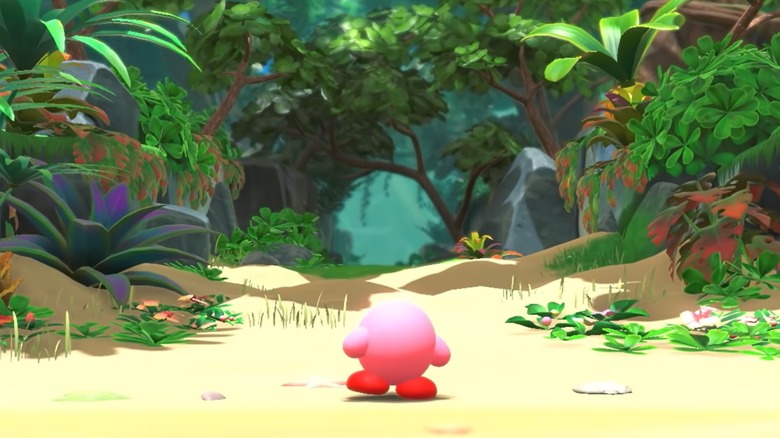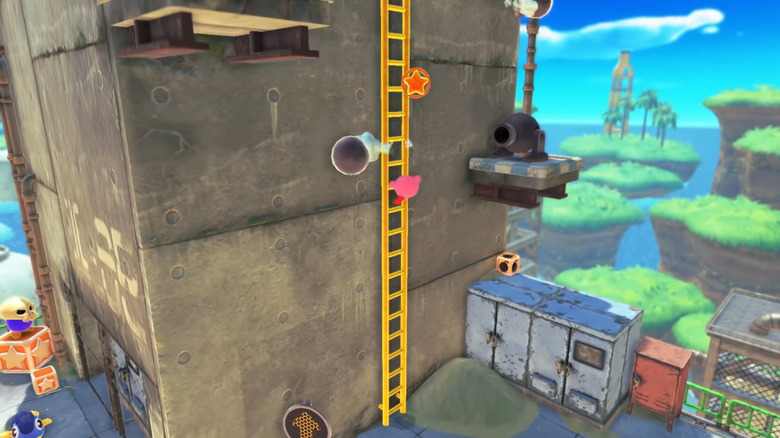The Real Reason We Haven't Seen A 3D Kirby Platformer Until Now
"Kirby and the Forgotten Land" releases on the Nintendo Switch on March 25, 2022, marking a major milestone for the popular series: it's the very first time gamers will get to enjoy a fully-realized 3D platformer in the "Kirby" universe, which has historically only featured side-scrolling as its sole method of exploration.
If you're confused, that's totally fine. "Kirby" has existed in 3D space since June 2000 when "Kirby 64: The Crystal Shards" was released on the Nintendo 64. But that doesn't exactly count, because that game (and many "Kirby" games released after it) featured a static camera that forced you to view the game's world as if it were any other side-scroller. This means "Kirby and the Forgotten Land" is the very first game in the entire series to break that trend.
It seems enough fans were curious about this design choice, so Nintendo of Australia brought a handful of the key developers behind "Kirby and the Forgotten Land" onto the fourth edition of its interview-focused column called "Ask the Developer". Among the panel was HAL Laboratory, Inc. Director Tatsuya Kamiyama, General Director Shinya Kumazaki, Level Design Director Yuki Endo, and Associate Producer Kei Ninomiya.
The interview itself is sectioned into four parts, but the first two seem to have the most pertinent quotes with regards to the team's mindset on building a 3D "Kirby" platformer without prior experience.
Giving Kirby a 3D world was very tricky
There were many reasons it took so long for Kirby to get his first proper 3D world, not the least of which was because some people at HAL Laboratory "felt that only 2D games should count as 'real' Kirby games," according to Kumazaki. There were technical issues, too, such as figuring out how to translate Kirby's iconic inhaling and spitting actions into 3D.
Some challenges were unique to the character itself, particularly one design problem: Kirby is round and when looked at from behind, it can be difficult to tell which direction he's facing. In order to keep Kirby visible to the player, the lighting and shadow technology needed some tune-ups. At the same time, the team also had to figure out how to keep things challenging while retaining Kirby's core abilities.
Kamiyama explained the developers had to reconsider their "standard development approach" when designing the game. A bit of automation helped boost efficiency, but the undertaking still required a considerable amount of work. Technical aspects aside, the very nature of the game was challenged when moved into a 3D space.
Kumazaki notes in the interview, "...as we structured our new 3D platformer around the same sensibilities as our classic 2D games, I noticed that the thrills and sense of adventure were not as prominent." Increasing enemy numbers helped overcome this issue. Some tweaks to Kirby's fighting abilities were necessary, as well, to ensure players would remain engaged without feeling "stressed" during fights and to account for the issue with quickly determining which direction the character is facing.
The rest of the interview offers technical details about character models and dynamic 3D cameras, ultimately giving fans an explanation about why they've waited so long for a 3D Kirby world.

